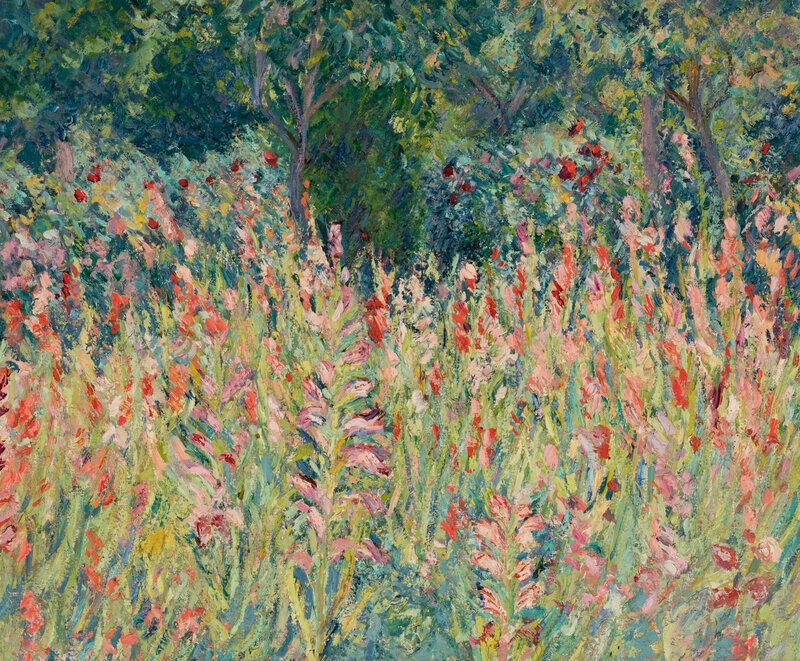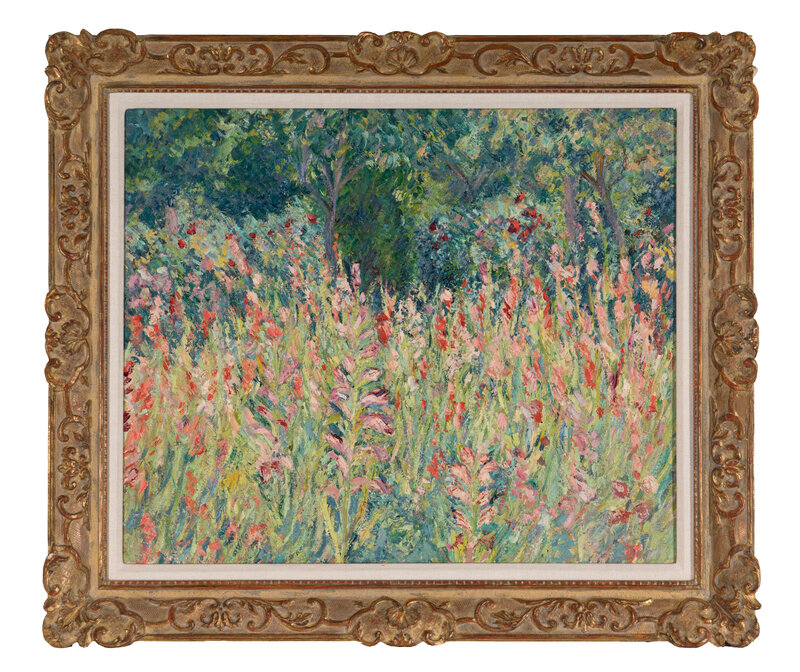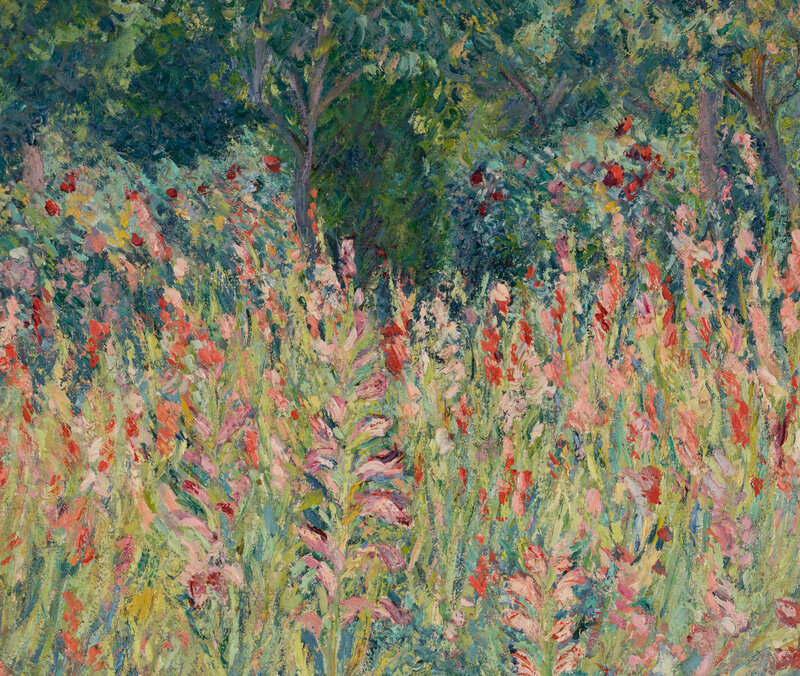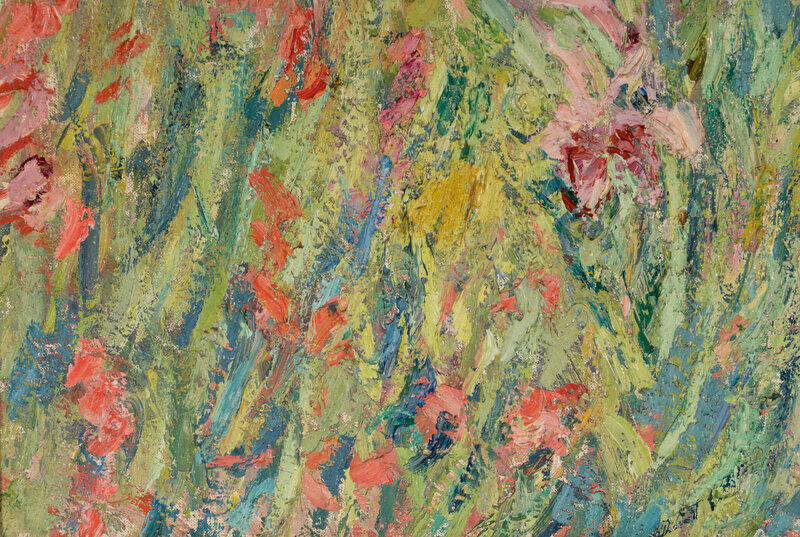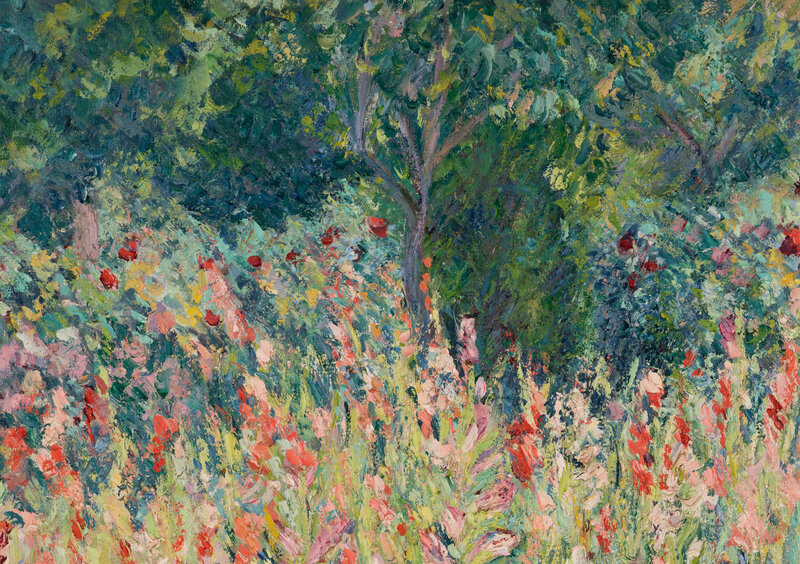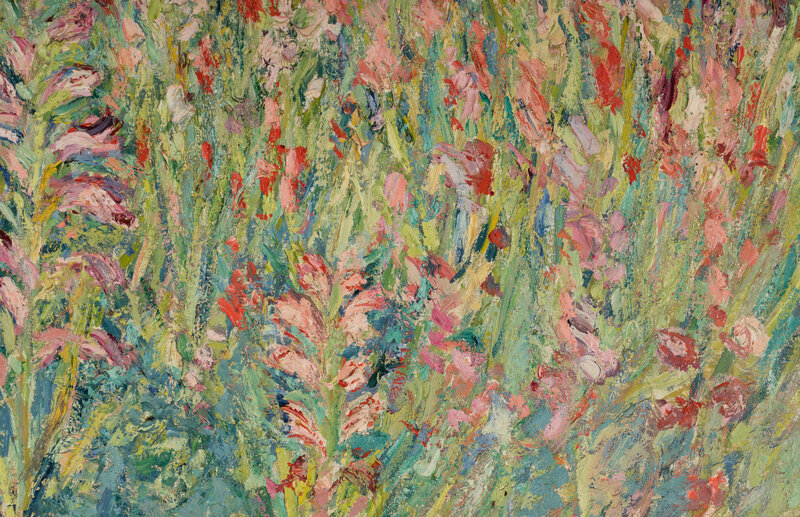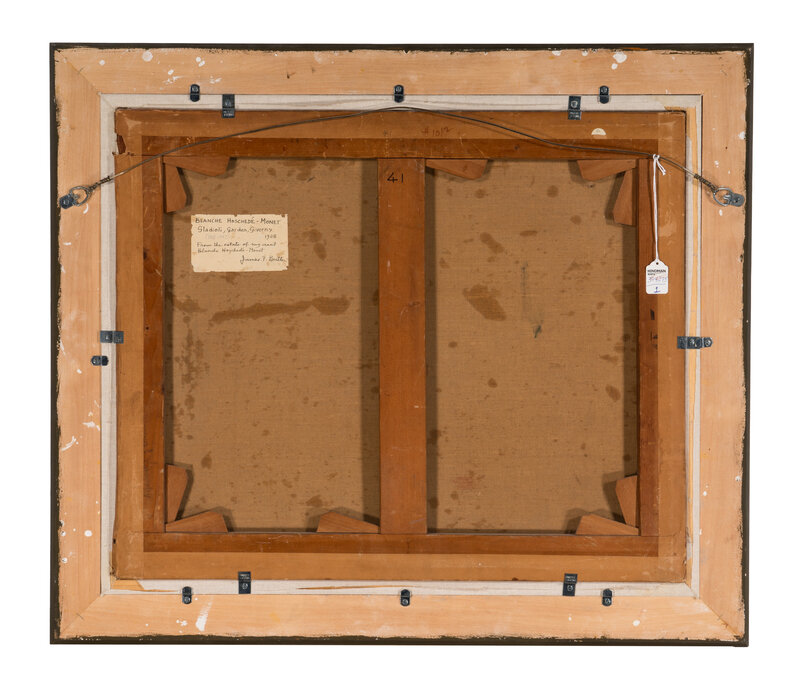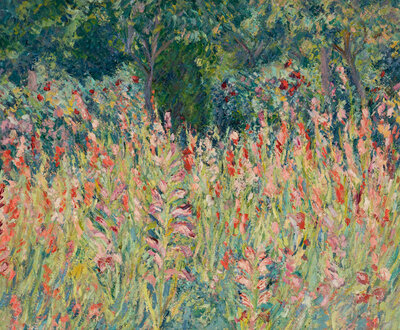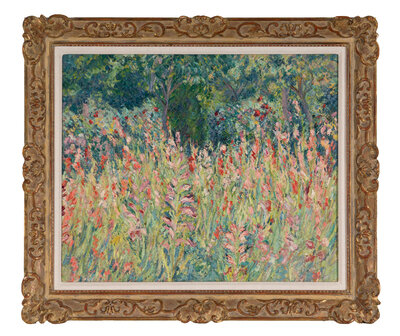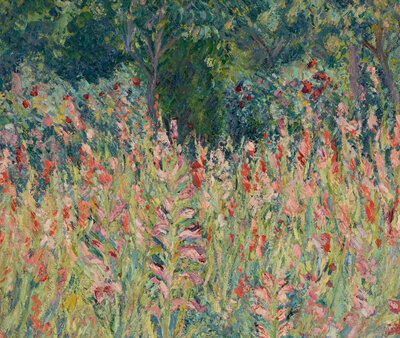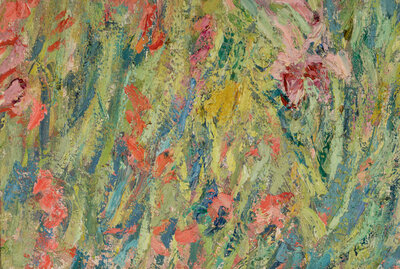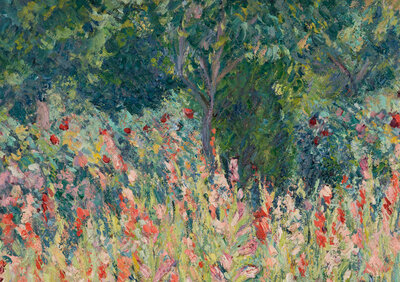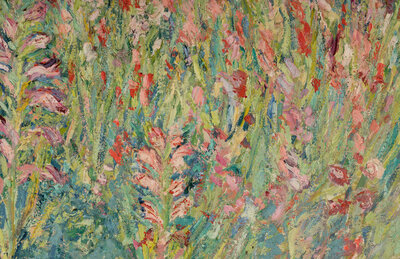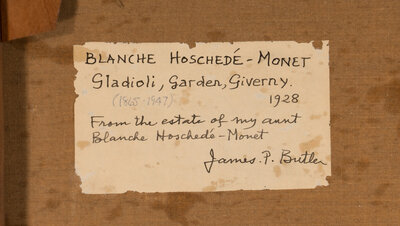Blanche Hoschedé-Monet
(French, 1865-1947)
Jardin de Glaïeuls, Giverny, 1928
Sale 2087 - Impressionist and Modern Art, Featuring the Collection of John and Rosetta Gernon
Oct 28, 2024
12:00PM ET
Live / Philadelphia
Own a similar item?
Estimate
$60,000 -
100,000
Price Realized
$107,950
Sold prices are inclusive of Buyer’s Premium
Lot Description
Blanche Hoschedé-Monet
(French, 1865-1947)
Jardin de Glaïeuls, Giverny, 1928
Oil on canvas
Inscribed with artist, title and date on a handwritten label from James P. Butler, the Artist's nephew, (on the reverse)
23 3/4 x 28 3/4 in. (60.3 x 73cm)
This lot is located in Chicago.
Philippe Piguet will include this work in his forthcoming Hoschedé-Monet Catalogue Raisonné.
Provenance:
The Artist.
The Estate of the artist.
Collection of James P. Butler, the Artist's nephew.
Fleisher Gallery, Philadelphia, Pennsylvania.
Lot Essay:
Jardin de Glaïeuls, Giverny, 1928, is a lush, impressionistic vision of tall, elegant gladioli in full bloom. Painted by Blanche Hoschedé-Monet, the composition exudes the influence of her stepfather and father-in-law, Claude Monet. Born in Paris and raised in an artistic environment, Hoschedé-Monet was the daughter of Alice and Ernest Hoschedé. Ernest collected impressionist paintings and was an important patron to Monet in his early years, purchasing the artist’s famed Impression, Soleil Levant, 1872, which gave the movement its name. However, by 1878, the Hoschedés went bankrupt. Upon Monet’s invitation, the family, which included six children, moved into a house in Vétheuil with the artist, his wife Camille, and their two sons, Jean and Michel. By 1880, Camille passed away and Ernest had abandoned his family, which allowed Monet and Alice to pursue an already burgeoning relationship. The two families eventually settled in Giverny in 1883, where Alice and Monet finally married in 1892.
Hoschedé-Monet began painting at the age of 11, encouraged by Monet who recognized her interest in art and took her on as a favored model, assistant, and his only student. Blanche would frequently paint en plein air with her stepfather and absorbed his techniques and teachings as result. She also socialized with the American Impressionist colony that had gathered in Giverny, painting along side John Leslie Breck and Theodore Butler. Breck and Blanche had a romance that was stopped by Monet, although he did allow his other stepdaughter, Suzanne, to marry Butler in 1892. Blanche eventually married Monet’s eldest son, Jean, in 1897 and settled in Rouen with him. After her mother’s death in 1911 and her husband’s death in 1914, Blanche returned to Giverny and took over her father-in-law’s household, caring for him until his own death in 1926. It is likely that she assisted Monet in painting the enormous panels of the Grandes Décorations, which he began in 1914 and continued to work on until he died. She became the guardian of both the artist’s iconic house and gardens, remaining there until she passed away in 1947.
In her own compositions, Hoschedé-Monet retained the almost “pure form of impressionism” that she learned from her mentor. In the present painting, she portrays the exuberant gladioli in Monet’s garden against a verdant background of trees. She uses short, decisive brushstrokes and brilliant hues to highlight the play of light through the luxuriant tangle of leaves, branches, and petals. With this artwork, it is clear that although she was greatly influenced by Monet, her oeuvre stands firm in its own right within the annals of French impressionism.
Condition Report
Auction Specialist
